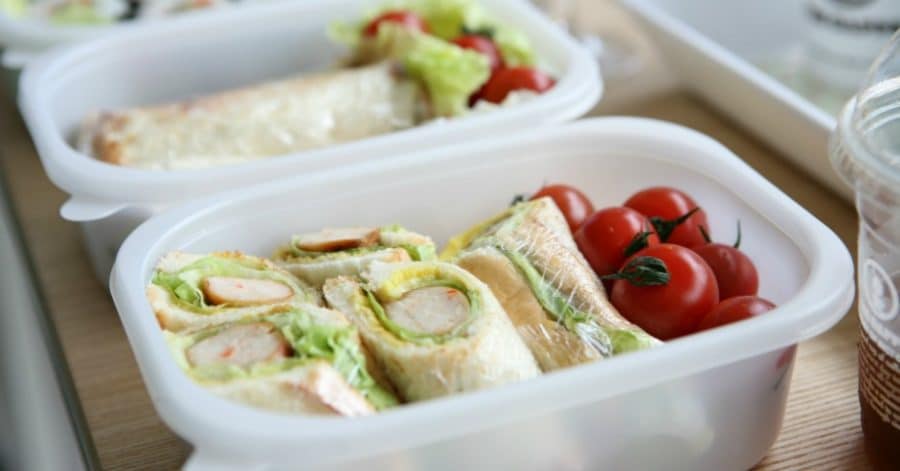How to Spend Less Money and Save More (7 Tips)

7 Lifestyle Changes That Will Help You Spend Less Money
Since entering the adult world, I’ve realized just how easily money can disappear, and how much I have spent unnecessarily, leaving little funding for things I truly want/need.
In order to afford that family vacation, a year’s supply of diapers, or the perfect coffee table, I’ve learned how to spend less money by making small lifestyle changes. This allows me to save money for what truly matters.
I’ll be frank with you, I’m not the world’s best money saver, but I have developed a method that works for me and helps me spend less money. It took some trial and error, and sometimes I fall off the wagon, but I have seen a significant difference in my spending habits.
So, if you find yourself saying that you don’t think you can stick to a savings plan, or you’re afraid to fail, just know that you have to start somewhere and tweak it until it works for you. These are seven changes I made to my workday that allowed me to put more aside for things that actually matter.

1. Get up a little earlier
You’re probably scratching your head wondering just how getting up earlier will save you money. Hear me out. Starting your morning early is the first step to making everything else on this list easier to achieve.
If you’re not a morning person (I’m certainly not) you might feel like this list is already setting you up for disaster, but fear not. You don’t need to suddenly start waking up at 5 am if you’re used to being up at 7 am.
By setting your alarm just half an hour earlier than normal, you’ll have more time to eat a bowl of cereal, make a coffee to take with you to work and pack lunch for you and the kids, if you didn’t have the chance the night before.
Not only will doing these things save you money throughout your day, but it also helps to combat that rushed feeling that is all too common with mornings.
I’ve found the best way to be successful with this was to build up to it gradually. I was notorious for getting up in just enough time for a quick shower before pulling on my clothes and running out the door, so the notion of waking up early was a tall order. But, by gradually setting my alarm 15 min earlier, and earlier, and earlier, and earlier over the course of two weeks, I have managed to get myself into a routine of waking up at 6:30 am instead of 7:30 am.

2. Skip the Starbucks
Not stopping to get that morning latte can be hard, especially when there is a Starbucks on every street corner, but doing so can save you in the neighborhood of $100 a month.
When offering money advice, choosing to not spend $5 a day on coffee is a common tip, and I have learned that it’s common for good reason. I was spending $2-$6 a day on my morning caffeine kick, but by making coffee at home and taking it on the road with you, you not only save money but also the time it takes to sit in the drive-thru or stand in line.
One suggestion I have to make your latte stops a thing of the past is to invest in a good travel mug. While it may cost you a bit to get the mug, if you fill it with coffee from home every day instead of going to Starbucks, it will pay for itself quickly.
If you really want to hold onto some of that Starbucks glamour, get yourself a milk frother, so you can make yourself a latte at home. This is especially worth it if there are multiple latte enthusiasts in the household.

3. Bike or walk to work
Providing your work is within walking or biking distance, and that you don’t have to drop your kids off at school on the way, try to forgo using your car to get there.
Having to drop your kids of can throw a kink into the plan, but if their stop is on route, there’s no reason you can’t get them on board and turn the morning commute into a more relaxed family walk.
There are two pretty obvious benefits to this suggestion:
- It’s good exercise; and
- You save money on gas (and wear and tear on your vehicle) or public transportation costs.
Depending on where you live, this could also help to save the headache of sitting in traffic – there is even the possibility that walking will get you to work quicker!
I was taking the subway to and from work every day, which cost me about $140 a month, and before that, I was spending substantially more on gas. So, not only am spending less money by walking to work, but I also feel better and more alert throughout my day.
It may take longer for you to walk or bike instead of driving or taking transit, so you’ll have to get your days started a bit earlier than before (remember tip 1?). To know how long the walk will take, do a trial run on a weekend. If your walk is a significant distance, getting a good pair of walking shoes is a sound investment.

4. Bring your lunch to work
This was probably the hardest change for me to make, but also the most rewarding. On average I would spend $10 on lunch, five times a week. That adds up to $50 a week, $200 a month, $2,400 a year! But I loved my sushi lunches or trips to the local deli.
The awesome but also unfortunate thing about working in a big city is that there is good food everywhere, so it’s fairly easy to just walk a few steps out the office door and find something to eat.
But, by making my lunches at home I have been able to save well over $1,000 per year. If you replace the food allowance for your child’s lunch with something made at home, the savings can easily stretch to over $1,500 per year.
To make this easier on yourself, my suggestion would be to make your lunch the night before so you don’t need to worry about it in the morning. I have gotten into the habit of putting my lunch together after finishing the dishes from dinner (if I’m lucky there are leftovers we can take) and before I sit down to watch some Netflix.
Making my lunches the night before helps to free up some time in the morning, helps me pack healthier than if I just threw something quickly together before work, and helps to ensure that I won’t run across the street for Thai food at lunch hour.
A good trick is to double the servings for your dinner. For example, if you’re serving four and the recipe you’re using is designed to feed four, make twice as much. Sure, it costs more, but it’s still way cheaper than four people buying lunches the next day.

5. Go straight home after work
Another awesome yet terrible perk of living in a big city is that so many establishments have some sort of “happy hour” that those who work 9-5 jobs love to take advantage of. But, even though those drinks come at good prices, going out with friends or co-works after work can really add up.
Sure, one drink after work may not set you back too far, but one drink can easily lead to a few, turning your one post-work drink into an evening out, and costing you more than expected. Going out like this can easily set you back $30 a week, and that may be low-balling it.
This one was hard for me, as I consider myself a bit of a social butterfly, and suffer from what the kids like to call FOMO (fear of missing out). I tried meeting up with friends or co-workers after work without getting anything, but my will power is not that strong, and more times than not I would end up with a glass of wine (or three).
The solution for me was to just say no and go straight home after work, often putting on sweatpants so I couldn’t be coerced into going back out again. Of course, I make exceptions for special occasions, but spending more time at home with the family instead of time with friends at the bar is more than just financially rewarding.

6. Hold off on getting take-out or going out for dinner
Much like buying lunch every day, picking up take-out or going out for dinner during the week adds up really quick. Sure, it’s convenient, but if you’re picking up for four people two times each week, that’s probably close to $100.
Over the course of the year, that’s $5,200. Even if you’re single and buying for yourself, a couple of takeout meals per week can be about $1,500 per year. And going out to restaurants is worse.
Whenever I can, I try to plan ahead and “meal prep” on Sunday afternoons, making all the dinners for the week. Luckily this sort of cooking is popular, so there are tons of resources out there with recipes you can use. (The Prepear App is great for this too)
In addition to meal prepping I have grown quite fond of my slow cooker. Another perk of waking up earlier is that I can throw a bunch of ingredients in there, set it on low, and come home to a hot home-cooked meal.
For good measure, I also make sure to have a frozen pizza or two in the freezer that I can easy heat up and eat with a Caesar salad, with the bonus of having leftovers for lunch! This isn’t to say you should never go out for dinner or get delivery on pizza night, but keeping tabs on how much you’re spending will help you realize just how much you can save.

7. Enjoy fun free activities at home after work
Making lifestyle changes can be hard, and the act of cutting things out of your life, especially social activities, can make things quite…well…boring. The best way to combat this is to plan activities that are cheap or free.
Have a movie night courtesy of Netflix. Not only is a one-month subscription the cost of a single ticket at theaters, but the popcorn is about $1 per bag, rather than $7.
A board game night with the family is also a classic way to entertain and bond without spending money. Even if you’re craving some extracurriculars with friends there are ways to do it on the cheap. Go out for tea instead of dinner, or take a walk.
I also try to make sure I enjoy my alone time by having a bottle of red wine and a good book around (I swear, I have to save all my money for my book collection).
The key to keeping a good attitude while making lifestyle changes like the ones I’m suggesting is to hold onto the base of what makes you happy and find ways to still do those things but in an alternative and cost-effective way!

Which ones will you start using?
Now that you have seen these top 7 tips to spending less money, which ones are you dying to try? Comment below and let us know! We cannot wait to see how much you can save by making SMALL changes in your daily routine.
More Money Saving Tips:
- Save Money Easily with the $5 Savings Challenge
- How to Make a Simple Budget Easily in 5 Steps!
- 50 Easy Ways to Save Money (Save $50 a Month)

Comments
Leave a Reply
Report a Problem
Please select the problem you are facing with this deal:
- Price Increased
- Price Decreased
- No longer available
- Expired
- Link doesn't work
- Suggestion
- Compliment
- Other
Add more details:
Thank you for your feedback. We really appreciate it.
Enter your email address if you would like
to receive a follow up.
Please Try Again
Thanks for providing the email address.
We will reach out to you as soon as possible.





















My husband and I both make our lunches every day after we realized how much we were spending on eating out! It really ends up saving so much money even if we were only getting lunches for $7 when we go out.